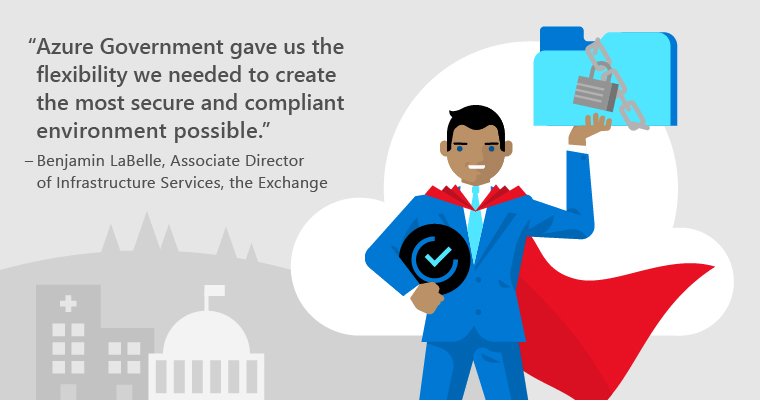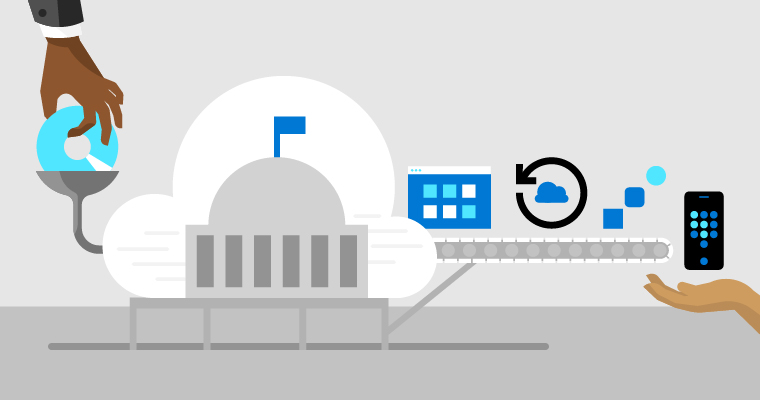
How the State of Washington uses Azure for data protection
The healthcare field can only thrive with successful partnerships, and successful partnerships are built on flexibility and innovative thinking. A few years ago, when the State of Washington Health Benefit Exchange (the Exchange) starting reassessing their technology systems, they realized that they were going to need some help. Their Midwestern State-based data center was falling short in several areas—aging hardware, legacy software, and insufficient storage. Because of the antiquated technology, the Exchange was growing increasingly concerned with its ability to remain compliant with upcoming rules and regulation from several key healthcare partners and departments, including Social Security, Medicaid, the IRS, and Homeland Security. Wanting to increase data protection for citizens was essential as well. Unfortunately, there wasn’t a quick fix for these problems, and the Exchange faced a big decision. They could spend lots of time and lots of tax-payer money to replace the hardware and software, or they could find a new partner to help them come up with an out-of-the-box solution.

Microsoft becomes a flexible friend
The Exchange is an innovator by nature. They’re one of the few states in the U.S. that has their own health insurance marketplace under the Patient Protection and Affordable Care Act. They’re not rookies when it comes to software technology innovation either. They’re running a one-of-a-kind Oracle Database on the Red Hat Enterprise Linux operating system. Having developed this combination of systems from the ground up, they didn’t want to overhaul them as well. When the Exchange decided to meet with and partner with Microsoft, they were excited to hear that Azure Government is both flexible enough to support their software needs and secure enough to ensure data protection and compliance.
There were still some concerns around security, however. Healthcare information is sensitive, and the Exchange needed to ensure that provider and patient records would stay safe in the cloud. “When we started this project, we were concerned about security and compliance and thought the cloud was a no-go,” explains Benjamin LaBelle, Associate Director of Infrastructure Services at the Exchange. “However, Azure Government gave us the flexibility we needed to create the most secure and compliant environment possible.” Because Azure Government is inherently FedRAMP High compliant, data protection and compliance across other government agencies is present in the platform. The Exchange also added extra security measurements ensuring data protection, illustrating their commitment to being good partners to patients and providers.

Outcomes and the future
To say that the transition to Azure Government has been successful is an understatement. First, because of the partnership with Microsoft and the decision not to replace the antiquated data center hardware, the Exchange saved $650,000. Secondly, they were able to perform the updates to the backend of the exchange—moving existing data—with no adverse impact to users. In fact, during the transition, the website and portals performed quicker during the transition. Lastly, the entire project took just 16 months, from planning through execution. Saying that the project is complete, however, isn’t entirely true. The Exchange continues to modernize their systems through Azure Government, utilizing Azure PaaS Services, Data Analytics, Data Warehouse, and Power BI.
Not one to stop to rest, the Exchange are working to develop with more partners, like Kubernetes and Docker, to enhance other parts of the platform. They are also working to help other states develop similar platforms. “Government agencies all want to transform, but they’re afraid to use cloud services to enable it because their data is too important…We want to show other governments that the cloud will work and that they can do this,” explains LaBelle. There’s no doubt that the Exchange will continue to drive innovation with whomever they decide to work, and that will help the healthcare industry thrive with their inspiring and successful partnerships.





